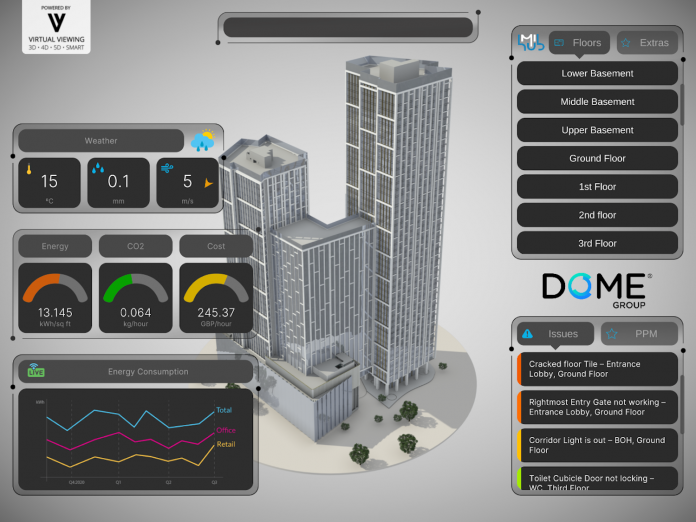Implementing BIM at the initial stages of a project can play a pivotal role in achieving sustainability goals, says Stewart Bailey, founder and director of Virtual Viewing and MiHub
Sustainability has established itself as a global cross-industry topic and, with the UK’s need for more quality housing, sustainable construction has become a particularly crucial element for the property sector. While the use of premium insulation materials, water management systems and energy efficient heating solutions plays a major part, there is one step that should be considered long before construction commences – and that’s implementing BIM.
The phrase “think from right to left, not left to right” comes to mind, which is designed to stress the importance of starting with the end goal and think back through all phases of construction. This way, one starts with the end goal central to all activities. So, “think from right to left, not left to right” and BIM can help you achieve your ESG goals (Environmental, Social & Governance):
Environmental potential of implementing BIM
BIM can drastically reduce construction waste. This is achieved by ensuring the best possible building materials and construction methods are being practised by all parties involved throughout the design as well as the construction phase.
Social effects of a BIM platform
Community engagement plays an important part when creating a new project of any scale within an established area. Locals will want to be assured that construction is going to plan, with an increasing number of consumers putting pressure on the construction sector to build with sustainability in mind. With a BIM platform, project managers are able to keep the local community up to date on important milestones.
Governance in relation to sustainability goals
With the rise of sustainability, the industry has seen a new level of government legislations that need to be followed. Publications such as the Building Safety Bill and the Levelling Up white paper not only emphasise the mandatory use of safe building materials but stress that everything must be done to achieve the government’s net zero goal.
One such change is the recently announced amendment to the Building Regulations, which requires a 30% cut on carbon emissions from new homes and 27% cut on other buildings. Known as Part L of the Building Regulations, the new rules come into force in June of this year and can almost be considered a soundbite of the Future Homes Standard and Future Buildings Standard, which come into force in 2025.
With above points in mind, it’s important to remember that sustainability actually already comes into play when a project is being designed. To make this process as efficient as possible, a digital twin or BIM model of the building structure can present an extremely valuable asset. Why? The reason is simple – there are a whole lot of parties involved in the design phase.
From architects to structural engineers and interior designers; they all have input to give. A shared model allows everyone to work on a real-time summary of the proposed products and materials, as well as their performance projections. This team effort allows for a transparent design phase that ensures the best possible and most sustainable outcome for the project.
The beneficial impact of BIM on sustainability goals, however, doesn’t stop at the design. Once ground has been broken and the heavy machinery makes its way, communication between all involved parties continues to be crucial.
An interactive BIM provides an effective platform for site managers, construction workers, electricians and other engineers to feed work progress into one single point of information. Any issues, delays or improvement suggestions can be analysed in real time. From a sustainability point of view, this will save time, minimise room for errors and improve the design.
Once the building is fully operational, BIM allows you to monitor and manage the energy efficiency of your developments at your fingertips, enabling you to implement changes that improve EPC ratings quickly. The cause of disruptions or high energy usage can easily be determined and fixed, allowing the building management team to maintain the property’s EPC rating at optimum level.
Recent statistics by Statista reveal that 73% of UK construction professionals have implemented BIM into their project in 2020. That’s a 4% increase from 2019 and 60% uplift since 2011.

Stewart Bailey
Founder and director
Tel: +44 (0) 203 714 8710














